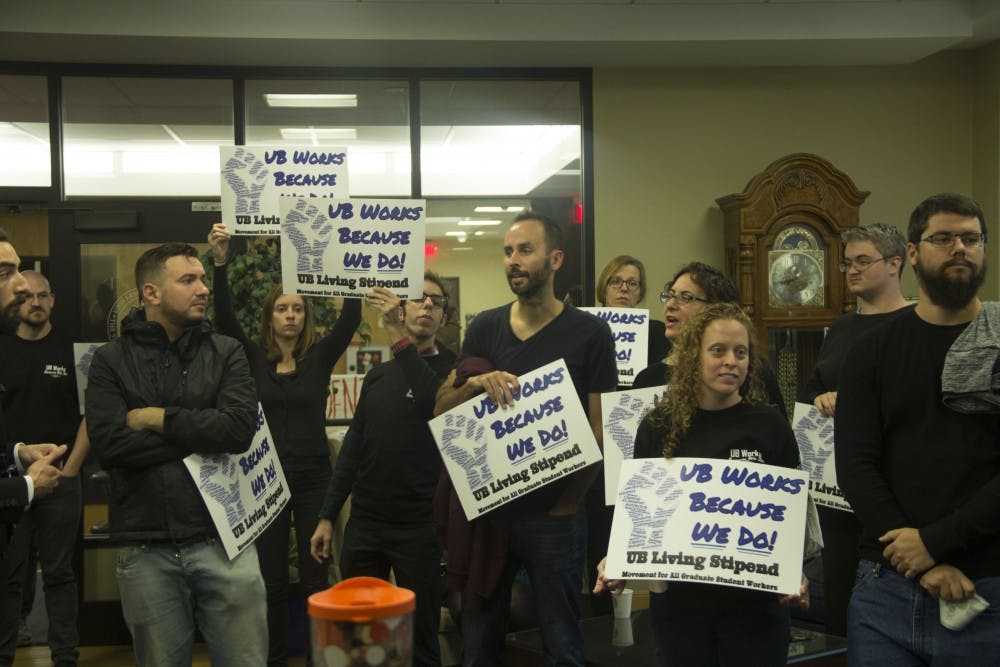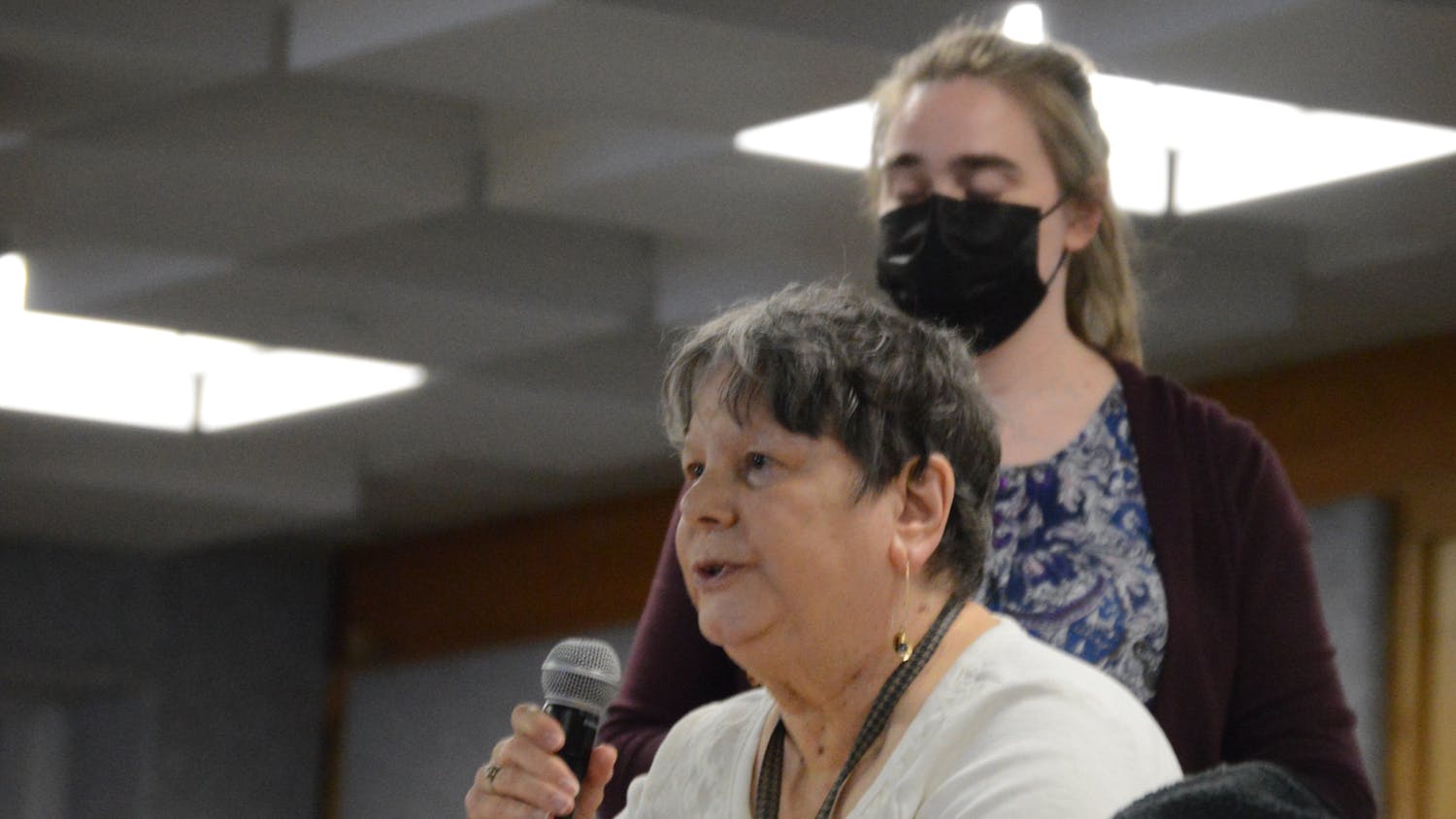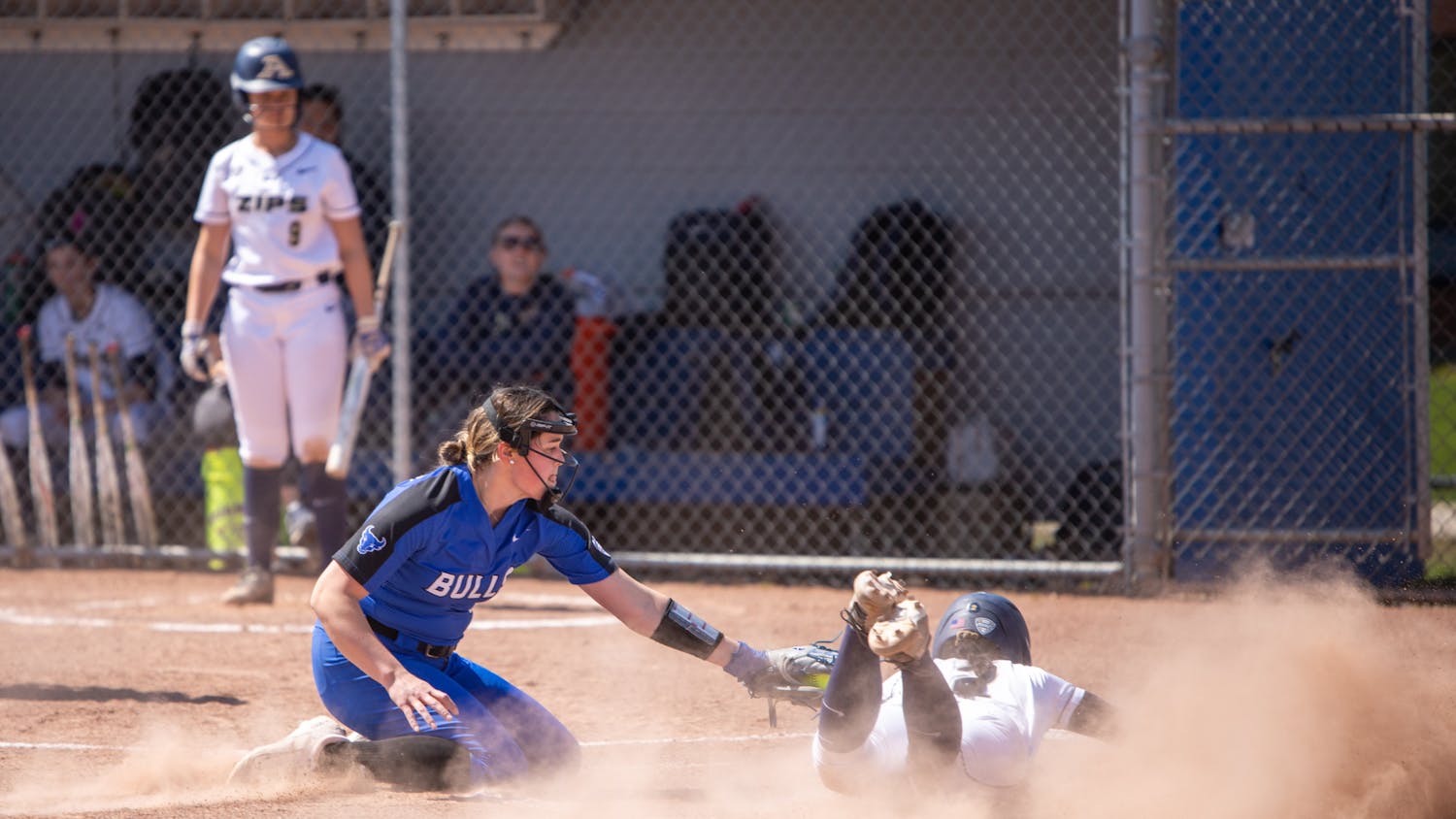In 2019, UB spent close to $46 million on athletics, with a 56% subsidy, making UB the highest athletics spender among Division 1 schools and the third highest subsidizer, according to a report done by Eastern Michigan University analytics professor, Howard Bunsis.
Bunsis, did the report at the request of graduate students, faculty and the United University Professions, who have expressed concern over UB spending and a lack of transparency about how UB funds get administered. He presented the data over Zoom on Sept. 18 to 145 faculty and graduate students, with former Faculty Senate Chair and UB medical school professor Philip L. Glick as one of the panelists.
Bunsis’ analysis shows UB increased athletic spending by 55% from 2011 to 2019, compared to an increase of 23% in all other areas. Coaches’ salaries also jumped from $9 million to close to $17 million, from 2017-2019.
Research, on the other hand, got neglected, he said. Compared to its 12 AAU peer institutions, UB spends more on administrative salaries and “Institutional Support” and less on research, Bunsis found. His analysis shows UB’s salaries for instruction and institutional support have stayed consistent from 2008 to 2018, with 52% going towards instruction and 11% going towards research. If UB spent the average amount on the salaries of upper-level administrators as peer institutions, UB would save over $23 million, he said.
On Sept. 18, UB released a statement in response to Bunsis’ report stating Bunsis is a paid consultant with a “pre-conceived agenda” and those reading his report should be “very skeptical” of his findings because it contains “several flaws” misrepresenting UB’s budget.
“Professor Bunsis’ report does not reflect an informed or cogent understanding of SUNY or our university’s finances,” UB said. “As a public university, UB follows state and federal laws and regulations and the best practices of the National Association of College and University Business Officers.”
He also found that UB has been hiring fewer tenure track professors and is relying on more non-tenure track positions than peer institutions. And, he said UB shows a shocking lack of transparency in how UB presents its finances to the public.
“It would be wonderful if [UB’s financial overview] was completed more timely and what’s missing is the statement of cash flows,” Bunsis said. “It boggles my mind that this doesn’t exist, Stony Brook has one. Does the UB administration have such a statement, of course! But they choose not to share it.”
He called UB’s refusal to make its budget transparent to the public “unconscionable,” saying UB’s annual budget report isn’t a report, but “a general discussion on finances” with no numbers in it. UB has 13 schools and colleges that the “budget without a budget” report doesn’t account for, he said. UB is the least transparent of the more than 100 institutions whose finances he has examined in the past 15 years, he said.
UB’s 12 peer AAU institutions are: University of California San Diego, University of California Los Angeles, University of Arizona, University of North Carolina at Chapel Hill, Rutgers University, University of Iowa, University of Wisconsin-Madison, Pittsburgh University, Stony Brook University, University of California Irvine, University of Michigan and University of Washington.
One of the easiest ways he found to save money, he said, would be to cut expensive sports programs.
“I really believe, foolishly, that the [Mid American Conference] presidents will get together and realize playing Division 1 football doesn’t make sense,” Bunsis said. “We should not be in the same sandbox as Ohio State, University of Michigan, and Penn State. Let’s play basketball Division 1, not football.”
UB Council Student Representative Michael Montoro said he doesn’t feel UB should leave Division 1 sports because it plays a “central role” in marketing, student life and getting students into school who might’ve not had the chance. He does believe, however, UB needs to take a second look at its athletic spending.
“I do think that we do need to seriously look at why this is, and whether or not there is a serious path forward for continuing to subsidize athletics with mandatory student fees in such large amounts,” Montoro said. “If athletics has a realistic plan for getting UB [to] a place where our percent subsidy is less than 50%, then I would be happy to hear it.”
The $46 million UB spends on athletics is a combination of total direct revenue and total subsidies and it is put towards coaching and staff salaries, athletic scholarships, facilities, and other expenses such as travel, sports uniforms, and fundraising. Bunsis said because UB athletics doesn’t generate enough revenue, the total subsidy is used to cover the other half of remaining expenses.
The total direct revenue consists of ticket sales for all UB athletic teams, contributions, rights and licensing, and other miscellaneous expenses, which was about $20.4 million. The total subsidy is the student fees and school funds, which was about $25.6 million.
The report also uncovered data transparency issues in UB’s budget report, UB’s revenue distribution, faculty, graduate student faculty and administrative salaries and investment performance within the UB Foundation.
Bunsis said out of all the institutions he has done financial reports on, UB has been the only institution to not share its 2019 Integrated Postsecondary Education Data System, which breaks down its finances. IPEDS are a compilation of campus specific revenues, expenses, assets, debt, and reserves from a finance perspective. UB has spent an inordinate amount of time rejecting his requests, he said, instead of just sharing the documents.
“It is just simply unconscionable, there is no excuse for not sharing a 19 page pdf that the administration definitively has,” Bunsis said. “SUNY Cortland and many other SUNYs provide the data right on their website...so this is not anything that’s tough, they should just do it.”
UB spokesperson Kate McKenna told The Spectrum in March that Bunsis’ report is based on his “perspective, using only publicly available online data, and without communicating with university administration. The report is drawn from past fiscal years and is not knowledgeable of or reflective of budget planning or economic forecasts of the university.”
In 2019, the UB Foundation had a total of over $1 billion in investments, and within that billion, it received $800 million in endowments. UB Foundation’s Investment Portfolio is broken up into real assets, private equity, and hedge funds. Bunsis said UB’s claim of this portfolio being less risky than an S&P 500, is “simply inaccurate.” The S&P 500 is a stock market index that measures the stock performance of the 500 large companies listed on stock exchanges in the United States.
According to UBF’s audited financial statements, Bunsis reported that each year from 2013 to 2019, UBF has lost to the S&P. He found the S&P return was higher than the UBF return investment portfolio and that investing in risky securities was inferior to investing in a S&P. In 2019, UBF investment return was at 5% whereas the S&P return was 6%.
Bunsis showed as enrollment increased UB hired less tenure track faculty and more non-tenure track faculty. From 2009 to 2020 tenure faculty saw a 7% decline, whereas non-tenure saw a 10% increase once enrollment reached 14%. His report also showed that the number of assistant professors declined from 317 in 2009 to 248 in 2020.
“This is a very disturbing new trend,” Bunsis said. “You’re not going to be a successful research institution if you don’t bring in new assistant faculty.”
On this, Montoro said he is in “100% agreement.” Montoro said a university thrives on young early career professors.
“Early career professors energize both undergraduate and graduate students, start research seminars, and bring new ideas to the table,” Montoro said. “It is as troubling to me now as it was in February that we have seen a nearly 20% drop in assistant professors over a 10 year span.”
Alexandra Moyen is the editor-in-chief and can be reached at alexandra.moyen@ubspectrum.com and on Twitter @AlexandraMoyen
CORRECTION: A previous version of this article stated “If UB spent the average amount on the salaries of upper-level administrators as peer institutions, UB would save over $23 billion.” It has been changed to $23 million. Additionally, the article didn’t have UB’s Sept. 18 response to Bunsis’ report.

Alexandra Moyen is the senior features editor of The Spectrum.





